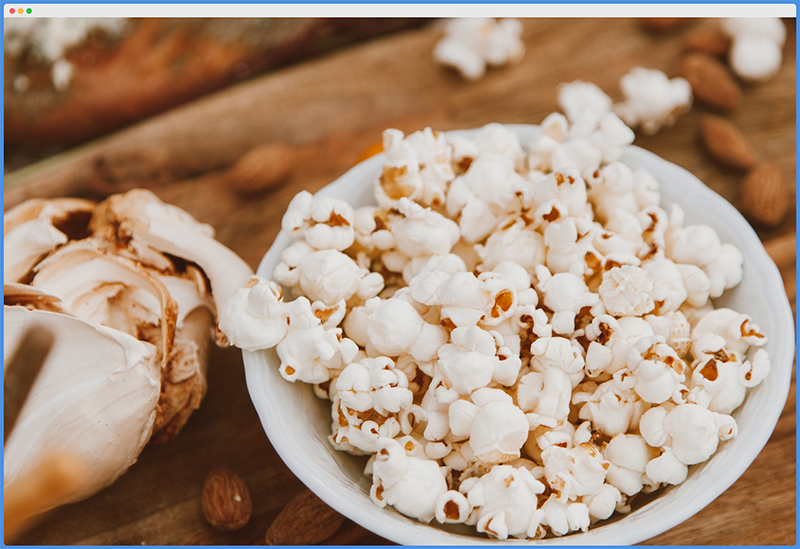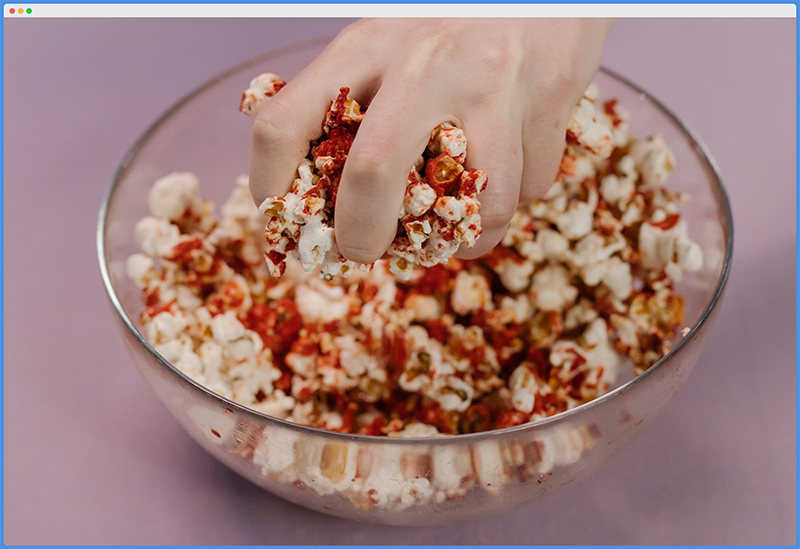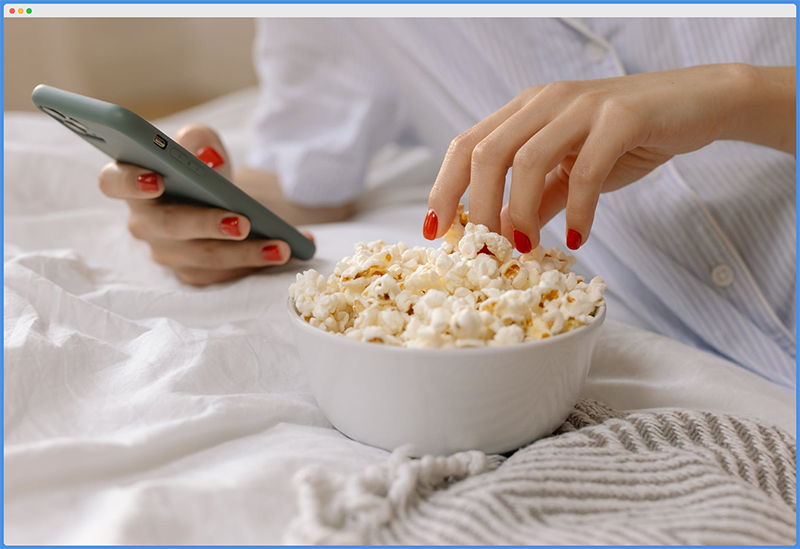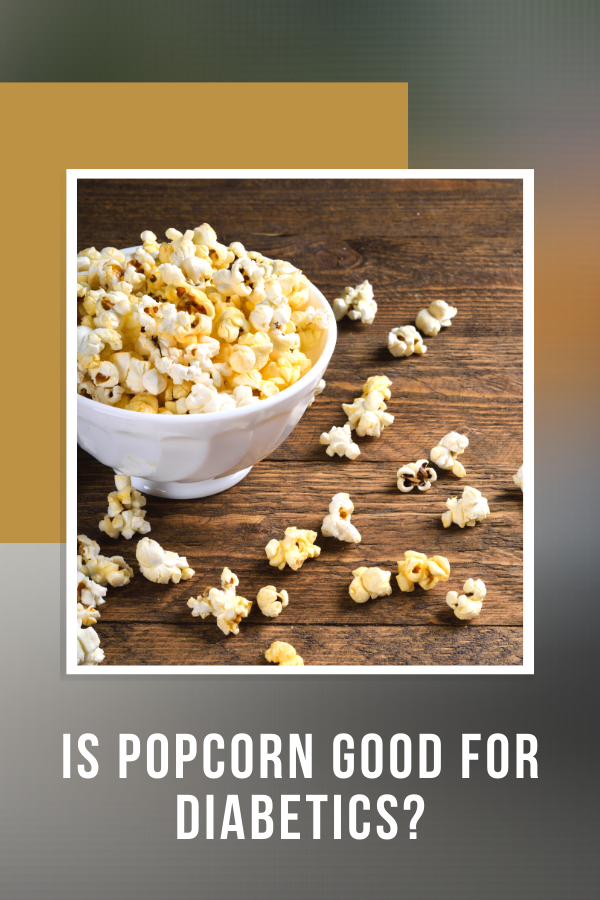For diabetics, choosing healthy snacks can be a daunting task.
A good rule of thumb is to pick out snacks that are rich in protein, fiber, and healthy fats, which will help control your blood sugar levels.
Not only that, but it’s also important to snack on foods that are rich in nutrients to promote overall health.
For people with type-2 diabetes, the risks of chronic illnesses like heart disease and obesity are higher, which makes it important to choose what you eat carefully.
While popcorn is one of the most popular snacks, there are concerns as to whether it’s good for diabetics or not.
Popcorn is a healthy whole-grain snack food that’s deemed as one of the best for diabetics partly because of its low calorie density.
Snacking on popcorn and other low-calorie treats may help with weight control, which leads to better management of diabetes and promotes lower blood sugar levels.
Plus popcorn is a diabetes-friendly food because it offers 1 gram of fiber for every 8-gram (1 cup) serving.
However, it’s important to air-pop your own popcorn as most prepackaged popcorn is full of trans fats, salt, and other unhealthy ingredients.

What Makes Popcorn Good For Diabetics?
Popcorn is a comfort food but also a whole grain, which contains satiating fiber.
The low-fat variety of popcorn is especially ideal for diabetics as long as you microwave or air-pop it, as this delivers about 31 calories and 6 grams of carbs.
If prepared the right way, popcorn can be a healthful snack owing to its high-fiber and low-calorie content, but for people with diabetes, the air-popped type is best.
However, diabetics still need to consider other factors when picking out their snacks.
While popcorn can be healthy for diabetics, it still contains carbs, meaning the consumer needs to choose the best type of popcorn, the way it’s prepared, and serve the right size in order to manage their blood sugar level.
All these go into preventing and/or reducing the risk of complications such as nerve damage, stroke, and heart disease while managing diabetes.
Popcorn’s Glycemic Load and Glycemic Index

For diabetics, the key to snacking is to snack smart, meaning that while popcorn can be a healthy snack, there’s a difference between the popcorn you prepare at home and that served at a movie theater or other public place.
As already mentioned, using an air popper or microwave plus a minimal amount of oil is better than buying popcorn from the local store or movie theater.
In terms of glycemic load, popcorn scores a low of about 7 while the glycemic index is about 55.
The difference between glycemic load and glycemic index is that glycemic load assesses how the popcorn will affect your blood sugar, while glycemic index measures how your blood sugar will spike after eating foods with carbohydrates.
For instance, popcorn’s glycemic load of 6 or 7 and glycemic index of 55 means that popcorn is low in carbs so it won’t affect your blood sugar, depending on how it’s made.
In fact, the American Diabetes Association lists a cup of popcorn as having less than 5 carbs, making it a great snack.
If you feel that one cup of popcorn won’t be enough for you, you can still have three and be within a reasonable range with up to 20 grams of carbs.
When measured on the glycemic index scale, plain microwave popcorn rests at 55 on a scale of 1-100, which is relatively good.
The USDA lists popcorn at the upper end of foods with a low glycemic index, meaning it’s healthier because it’s digested slowly and helps diabetics manage insulin, lipid, and glucose levels.
Therefore, when choosing the snacks to buy and eat, consider those with a lower glycemic index like air-popped popcorn, which is a better option compared to other sugary or salty snacks to help diabetics avoid diabetes complications and high blood sugar.
Generally, the digestive system rapidly processes foods with a higher glycemic index, which in turn results in faster sugar absorption into the bloodstream.
Consequently, such foods produce significant increases in the levels of blood sugar, and because diabetics can’t naturally regulate their blood sugar, it could lead to hyperglycemia.
On the other hand, foods with a low glycemic index are absorbed at a slower rate, meaning there’s a more gradual increase in insulin and blood sugar levels.
Low glycemic index diets offer more health benefits including better lipid and glucose levels for diabetics, plus support for weight control because slow absorption allows you to control your appetite and feel more satisfied for longer.
Popcorn’s Nutritional Value And Fiber Content

As we’ve already seen, popcorn is a whole-grain food, with one serving delivering 70 percent of the recommended whole grain intake.
Popcorn is rich in fiber, with a little over 1 gram of fiber in a cup of air-popped, unsalted popcorn and few calories.
It’s also almost fat-free and contains zero cholesterol, 1 gram of protein, about 6 grams of carbs, and less than 0.5 grams of calories per serving (cup).
On top of that, popcorn offers various minerals and vitamins including vitamin A, E, B-6, pantothenic acid, folate, thiamin, riboflavin, and niacin.
One serving of popcorn also contains trace amounts of manganese, iron, magnesium, potassium, phosphorus, copper, and zinc.
The hull (also known as shell or kernel) is the source of most of the nutrients you find in popcorn, and it contains zeaxanthin to maintain eye health, lutein, and beta-carotene.
The kernel also contains polyphenols with anti-inflammatory and antioxidant properties that may protect against cardiovascular disease and cancer.
According to researchers, popcorn has up to 300 milligrams of polyphenols for each serving, which is equivalent to 13 percent of the average daily intake of polyphenols especially for people in the US.
All these benefits are available to diabetics when the popcorn is air-popped, meaning if you add too much butter, salt, or oil, it can reduce its nutritional benefits.
In terms of fiber content, popcorn is 100 percent unprocessed grain, with a three-cup serving containing about 3.5 grams of fiber.
This way, the diabetics can meet the recommended intake of about 70 percent of the whole grains required every day.
For diabetics, fiber slows down sugar absorption and the rate at which carbs are digested while helping you maintain your blood sugar levels and promoting satiety.
According to a 2016 study published in the Advances in Nutrition journal, popcorn was found to be a good snack because it can play a key role in controlling appetite, weight, and promoting satiety.
How Much Popcorn Is Enough For Diabetics?

Being mindful of the portion size you need as a diabetic when preparing popcorn is important so as to keep the snack healthful.
You can cook on the stove, microwave, or in an air-popper without adding any ingredients like butter or salt.
It’s important to stick to the recommended serving sizes based on your calorie intake, as this can affect how much you can or should eat per serving of popcorn.
In terms of portion sizes, you can eat about five cups of air-popped popcorn, which delivers 100-150 calories with minimal fat.
You can eat more or less in a serving based on your diet plan, but avoid eating more than your doctor advises between meals.
Maintaining a specific portion size is important when it comes to controlling blood sugar levels in diabetics.
Popcorn is a low glycemic index food when eaten in small amounts, so managing the portions you take will ensure there’s no spike in blood sugar levels.
Make sure you measure the portion sizes carefully and use similar calorie counts or measures per snack.
If you wish to enhance the flavor, don’t use butter or more salt. Instead, add a small amount of grated low-fat cheese, a drizzle of olive oil, a sprinkling of nutritional yeast, or spices like cinnamon, garlic powder, or chili powder.
Avoid picking the kettle corn variety of popcorn as the extra sweetness in the snack has more sugar.
This also applies to popcorn covered in candy or caramel as these aren’t good snack choices for diabetics for the same reason.
Alternatively, you can pick other snacks such as nuts (roasted or raw) that are rich in protein and healthful fats, vegetables (raw or minimally processed), fruits, and cheese in moderation.
Wrapping Up
Popcorn is a good and healthful snack for diabetics as long as it’s consumed in the right way, which means no butter, salt, or hydrogenated oils.
Be sure to keep the recommended serving size that’s about 3 cups of air-popped corn.
If you want extra flavor, sprinkle onion or garlic powder or even herbs like dried oregano, thyme, and basil with a dash of paprika to season the snack.
Overall, eat popcorn once in a while, not on a regular basis, or substitute other low-carb snack options that are just as delicious.
